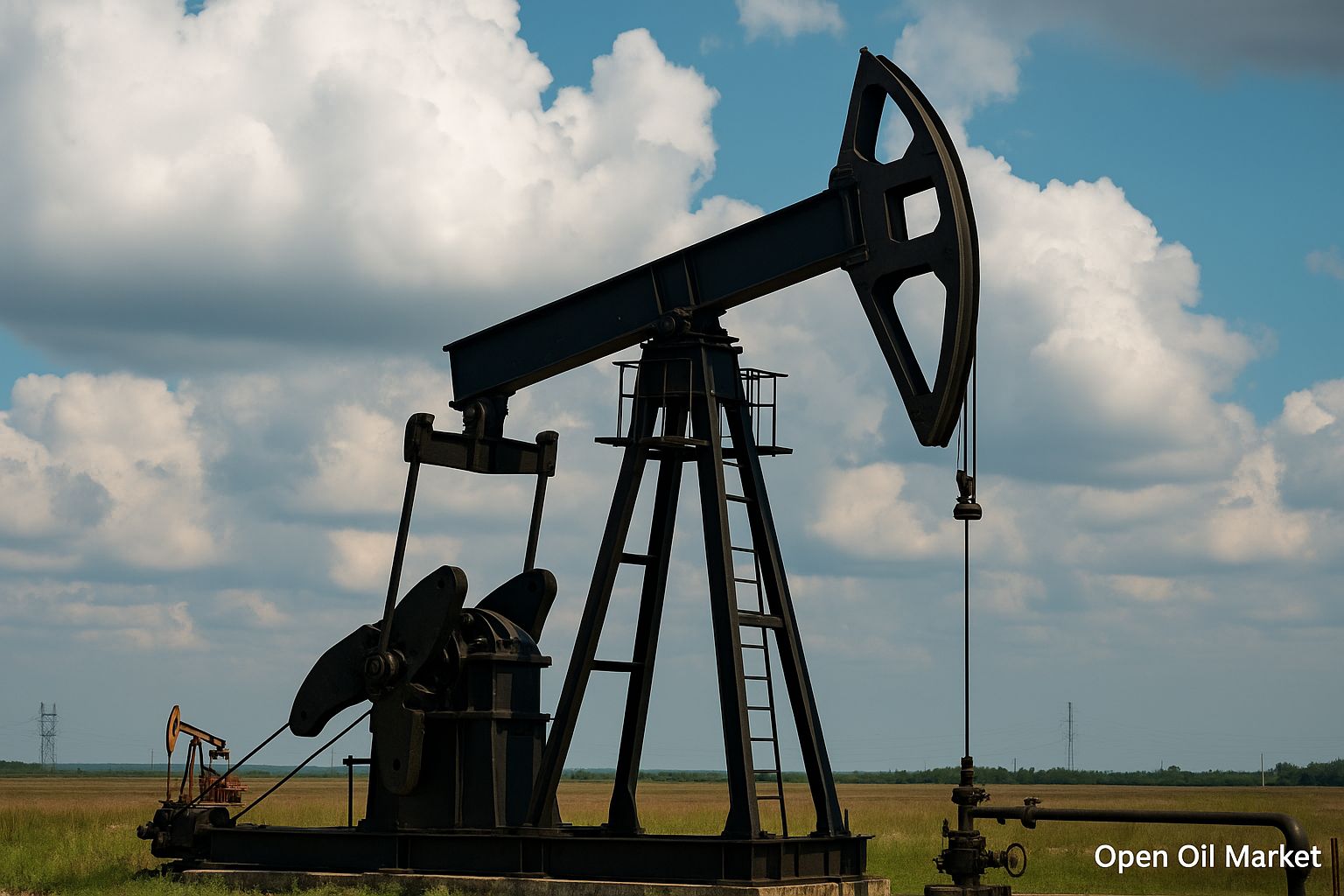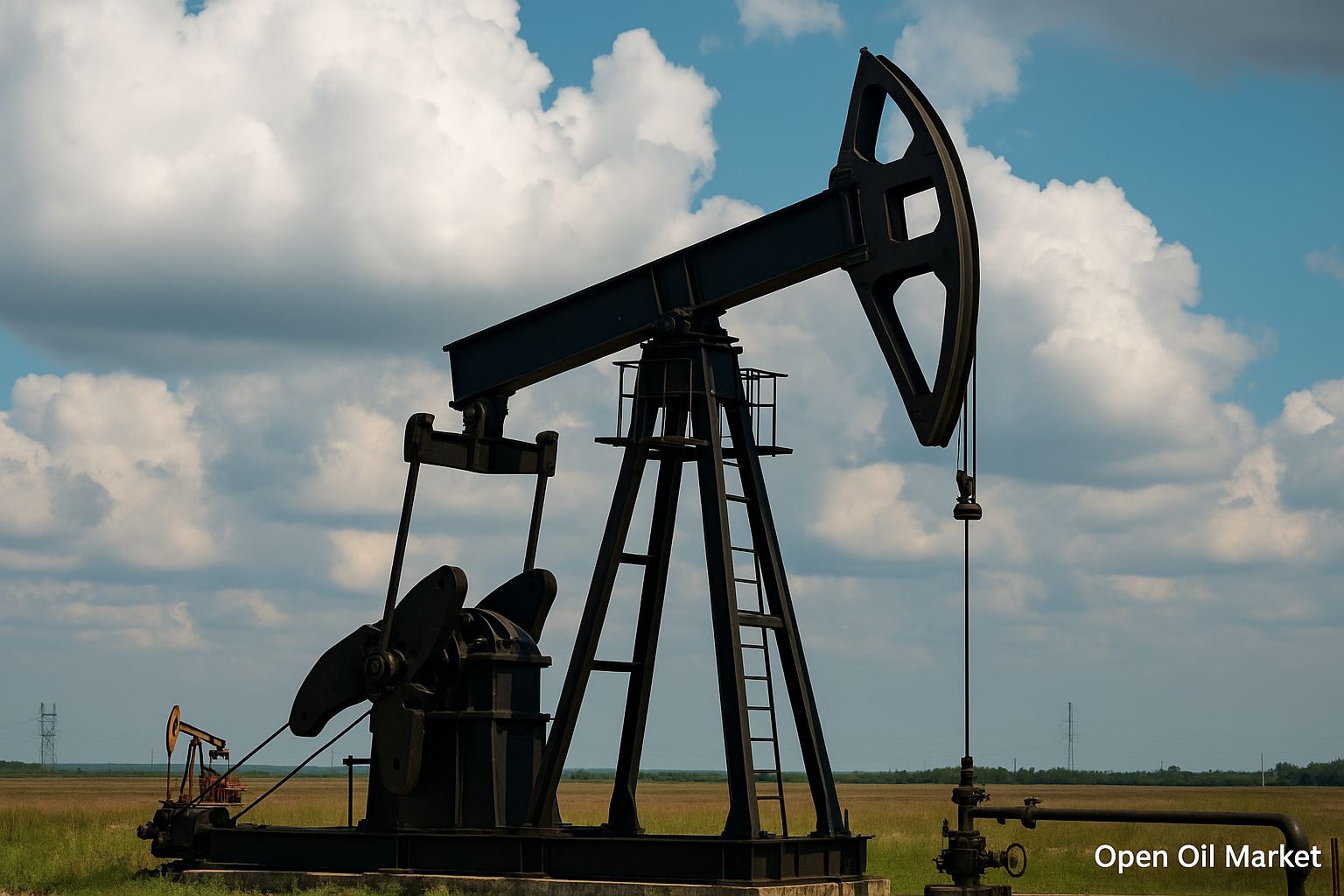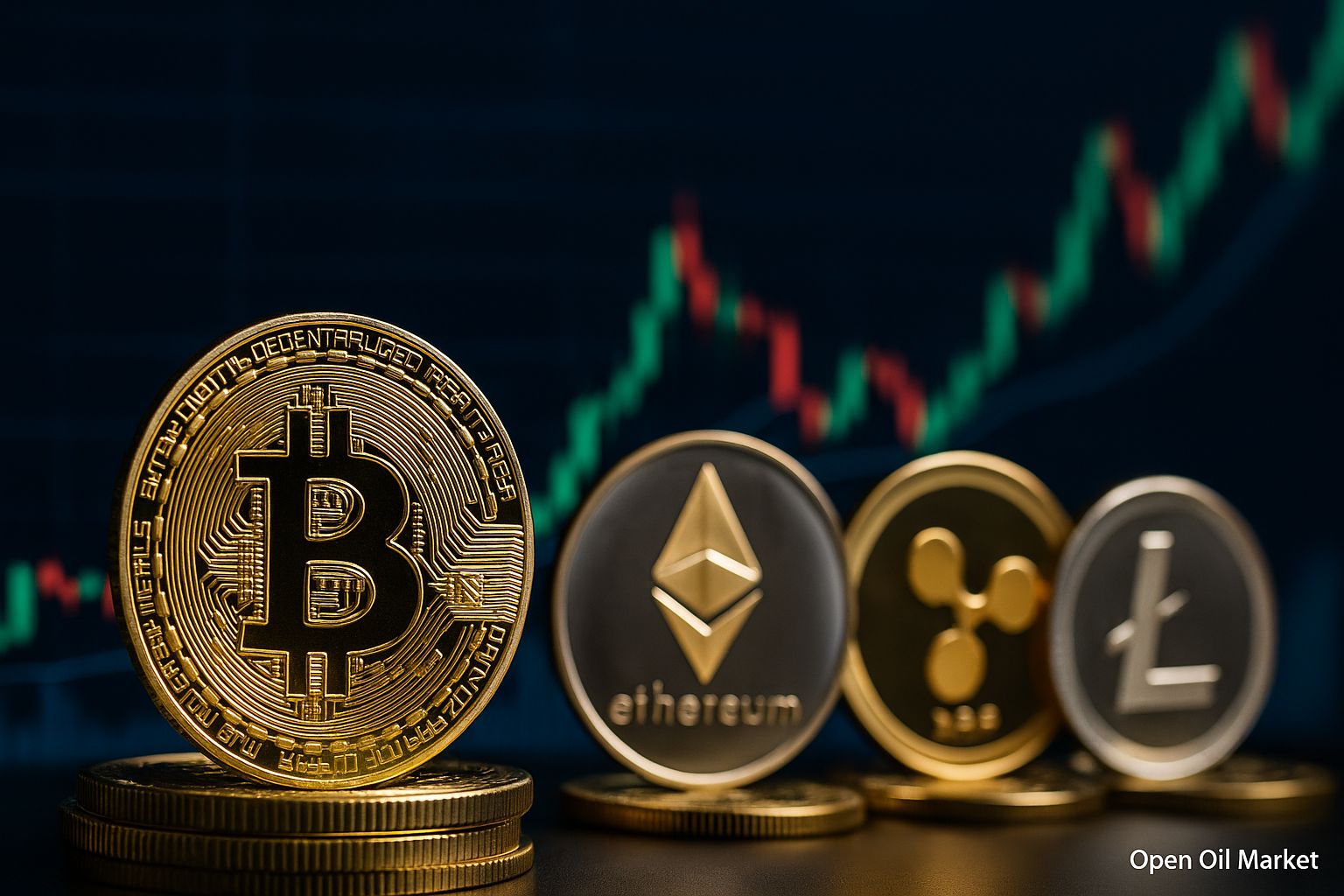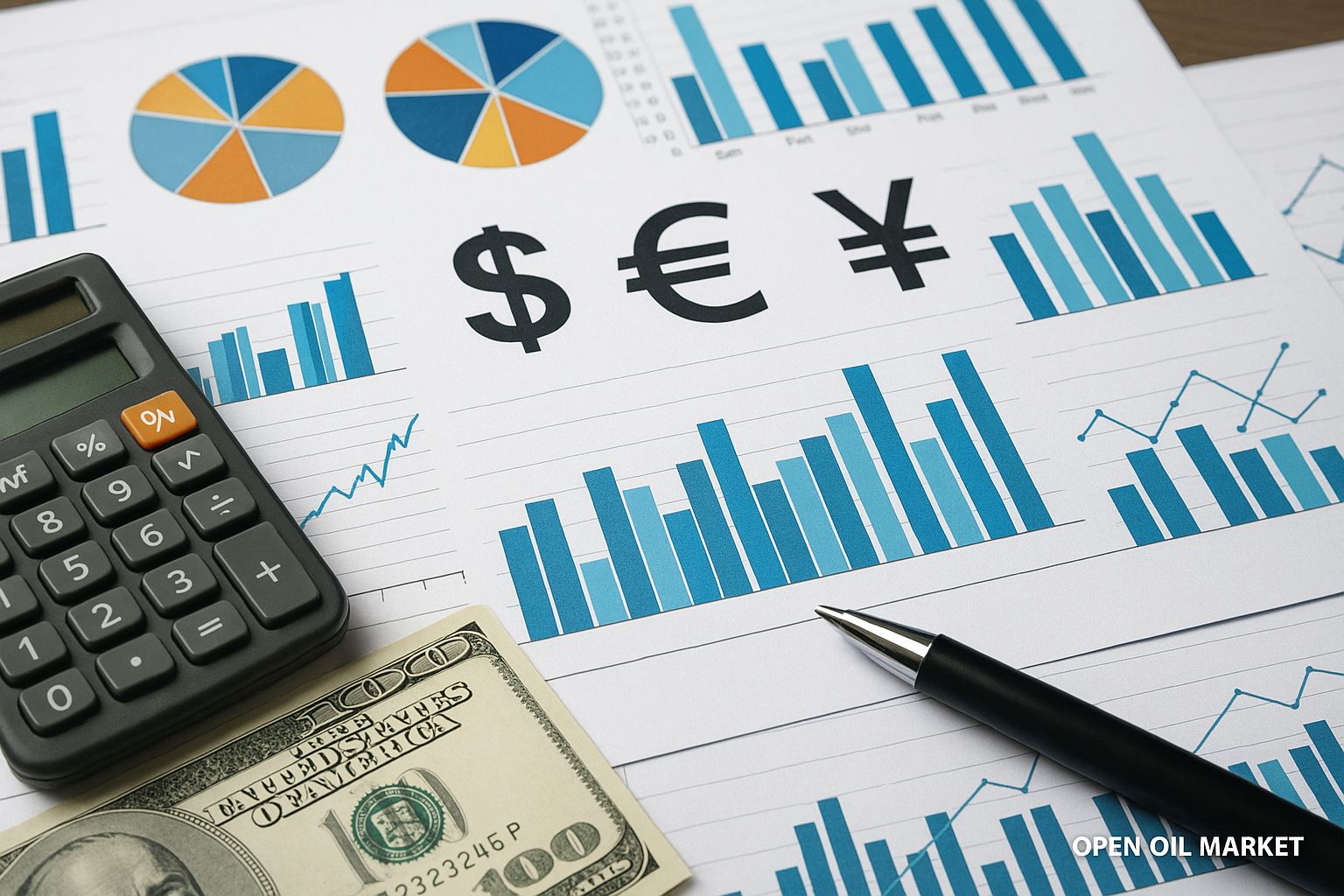
Energy Sector News – Sunday, August 17, 2025: Hopes for Easing Sanction Tensions; Stability in Oil and Gas Markets
Key events in the fuel and energy sector (FES) as of August 17, 2025, capture the attention of investors and market participants with their ambiguity. The long-anticipated summit between Russia and the United States in Alaska yielded mixed results: no direct breakthroughs occurred, yet dialogue will continue, instilling cautious hope for the easing of sanction tensions. The global oil market continues to face pressure from rising supply and slowing demand, with Brent crude prices hovering around the mid-$60 per barrel mark, reflecting a fragile balance of factors. The European gas market demonstrates relative resilience: underground gas storage facilities (UGS) in the EU are filled to over 85%, providing a buffer ahead of winter and keeping prices at a moderate level. Meanwhile, the global energy transition is gaining momentum, with new records for renewable energy generation being set in many regions, although countries have not entirely abandoned traditional resources for energy system reliability. In Russia, following a recent surge in prices, authorities are implementing a comprehensive set of measures aimed at stabilizing the situation in the domestic fuel market. Below is a detailed overview of key news and trends in the oil, gas, electricity, and raw materials sectors as of this date.
Oil Market: Excess Supply and Cautious Demand Pressure Prices
Global oil prices remain relatively stable, influenced by fundamental factors. The North Sea Brent blend is trading at around $65–66 per barrel, while U.S. WTI is in the range of $62–64. Current prices are approximately 10–15% lower than levels a year ago, reflecting a gradual market correction following the peak energy crisis of 2022–2023. Several factors continue to influence price dynamics:
- OPEC+ Production Increase: The oil alliance is steadily increasing supply to the market. In August 2025, the total production quota for key participants in the agreement increased by approximately 548,000 barrels per day; a comparable increase is expected in September. This continues the trend of the previous months – from April to July, restrictions were gradually eased, leading to an increase in global oil and petroleum product inventories.
- Slowing Demand Growth: The pace of global oil consumption is decreasing. The International Energy Agency (IEA) has revised its demand growth forecast for 2025 down to around 0.7 million barrels per day (compared to over 2.5 million in 2023). Even OPEC's estimates have become more cautious – about +1.3 million b/d for 2025. Reasons include a weakening economy and high prices from previous years, which encourage energy conservation. An additional factor is the slowdown in industrial growth in China, which limits the appetite of the world's second-largest oil consumer.
- Geopolitical Uncertainty: The market is pricing in conflicting risks following U.S.-Russia negotiations. On one hand, the lack of serious progress means continued sanction pressure, which limits trading activity. On the other hand, the mere fact of continued dialogue somewhat reduces the "premium" for tension. As a result, oil prices fluctuate within a narrow range, lacking momentum for either a new rally or a collapse.
The cumulative impact of these factors creates an excess supply situation, keeping the oil market near a surplus. Exchange prices confidently remain below last year’s highs. A number of analysts believe that if current trends continue, by 2026, the average Brent price could fall to around $50 per barrel.
Gas Market: Europe Filling Storages, Prices Remain Moderate
In the gas market, Europe is in the spotlight. EU countries are rapidly filling their underground storage facilities with natural gas, preparing for the autumn-winter period. By mid-August, European UGS facilities were over 85% full, significantly ahead of schedule and approaching the target level of 90%, set for early November. Exchange prices for gas remain at a relatively moderate level: September futures at the TTF hub are trading around €30–32/MWh (approximately $380–400 per thousand cubic meters), indicating a balance between supply and demand. The active influx of liquefied natural gas (LNG) also accelerates storage filling: in July 2025, LNG imports to Europe reached about 11.3 billion cubic meters, a 37% increase compared to the previous year. A potential risk ahead is heightened competition for LNG from Asia if economic growth accelerates in the Asia-Pacific countries. However, at the moment, the balance in the European gas market seems stable, and prices remain relatively low. This situation is favorable for Europe’s industry and energy sector ahead of the winter season.
International Politics: Ongoing U.S.-Russia Dialogue Amid Sanction Pressure
On August 15, a meeting between the presidents of Russia and the United States took place in Anchorage, Alaska – an event that the global community had been anticipating with great attention. As experts predicted, the summit did not conclude with specific agreements in the oil and gas sector, as energy topics were not the main focus of the agenda. Nevertheless, both sides termed the mere fact of renewed direct dialogue as a positive signal. Following the meeting, the leaders agreed to continue consultations at the level of relevant groups and maintain communication channels between the governments.
No changes to the sanction regime have occurred so far: existing U.S. restrictions regarding Russian energy resources remain fully in place. Moreover, the U.S. administration has previously indicated its readiness to impose new restrictive measures if it does not see progress in the political resolution of the crisis. In the U.S., in particular, there has been open discussion about the possibility of introducing 100% tariffs on all exports to China if Beijing does not reduce its purchases of Russian oil. In this context, the absence of breakthroughs at the summit means continued pressure. However, the continuation of the negotiation process gives hope that the most severe measures have been postponed for now. In the coming weeks, market attention will be focused on the further course of dialogue: positive shifts could improve investor sentiment and ease sanction rhetoric, while the failure of contacts threatens a new escalation of trade restrictions. Thus, the outcomes of the meeting in Alaska are expected to have long-term implications for energy cooperation and sanction policy.
Asia: India and China Between Imports and Domestic Production
- India: Faced with pressure from Western sanctions, the country has clearly outlined its position: a sharp reduction in imports of Russian oil and gas is unacceptable due to the key role these supplies play in energy security. New Delhi has negotiated more favorable terms for itself: Russian companies are forced to offer a further discount on Urals oil (estimated at around $5 to the price of Brent) to retain the Indian market. As a result, India continues to actively purchase Russian oil on favorable terms and is increasing its imports of petroleum products from Russia to meet its growing demand. At the same time, the Indian government is taking steps to reduce dependency on imports in the long term. Prime Minister Narendra Modi announced the launch of a national program for the exploration of deepwater oil and gas reserves on Independence Day (August 15). Under this initiative, the state company ONGC has already begun drilling ultra-deep wells (up to 5 km) in the Andaman Sea, and the initial results are deemed promising. This "deepwater mission" aims to spur the discovery of new hydrocarbon reserves and bring India closer to its goal of energy independence.
- China: The largest Asian economy is also increasing its energy imports while simultaneously boosting domestic production. Chinese importers remain major buyers of Russian oil and gas: Beijing has not joined the Western restrictions and has taken advantage of the situation to import raw materials at favorable prices. According to Chinese customs statistics, in 2024, the country imported about 212.8 million tons of oil and 246.4 billion cubic meters of natural gas – these volumes increased by 1.8% and 6.2%, respectively, compared to the previous year. In 2025, imports continue to grow, albeit at more moderate rates due to the high base from the last year. Simultaneously, Beijing is stimulating its own oil and gas production: from January to July 2025, national companies extracted 126.6 million tons of oil (+1.3% year-on-year) and 152.5 billion cubic meters of gas (+6%). Increasing domestic production helps partially compensate for increased demand but does not eliminate the need for imports. Chinese authorities continue to invest in the development of fields and technological projects to enhance well yields. However, given the scale of its economy, China’s dependency on energy imports will remain significant: analysts estimate that in the coming years, the country will import at least 70% of its consumed oil and around 40% of its gas. Thus, India and China – the two largest Asian consumers – will continue to play a crucial role in global raw material markets, combining strategies for securing foreign supplies with the development of their own resource bases.
Energy Transition: Growth of Renewable Energy and the Role of Traditional Generation
The global transition to clean energy is rapidly gaining momentum. Many countries are setting new records for electricity generation from renewable sources (RES). In Europe, by the end of 2024, total generation from solar and wind power plants exceeded electricity generation from coal and gas-fired power plants for the first time. This trend has continued into 2025: thanks to the commissioning of new capacities, the share of "green" electricity in the EU continues to grow, while the share of coal in the energy balance is decreasing after a temporary increase during the crisis of 2022–2023. In the U.S., renewable energy has also reached historic levels – at the beginning of 2025, over 30% of total generation came from RES, and the combined output from wind and solar sources first surpassed generation from coal plants. In China, the leader in installed RES capacities, tens of gigawatts of new solar panels and wind turbines are commissioned annually, constantly setting new generation records. Worldwide, companies and investors are directing massive resources into the development of clean energy: according to the IEA, total investments in the global energy sector in 2025 will exceed $3 trillion, with more than half of this funding directed towards RES projects, grid modernization, and energy storage systems.
At the same time, energy systems still rely on traditional generation for stability. The growth in shares of solar and wind creates challenges in balancing the grid during times when the sun does not shine or the wind dies down. To cover peak demand and reserve capacity, gas and even coal power plants are reactivated in some cases. For instance, in certain regions of Europe last winter, coal power was briefly ramped up during windless weather – despite environmental costs. Many governments are investing in the development of energy storage systems (industrial batteries, pumped-storage hydroelectric plants) and smart grids capable of flexibly distributing loads. These measures are aimed at increasing reliability in power supply as the share of RES grows. Experts predict that by 2026–2027, renewable sources could become the leading providers of electricity generation globally, ultimately surpassing coal. However, for the next few years, there remains a need to support conventional power plants as insurance against outages. Thus, the global energy transition is reaching new heights but requires a delicate balance between “green” technologies and traditional resources.
Coal: Stable Market Amid High Demand
Despite the rapid development of RES, the global coal market maintains significant volumes and remains an integral part of the energy balance. Demand for coal products is particularly high in the Asia-Pacific region, where economic growth and electricity needs support intensive consumption of this fuel. China, the world's largest consumer and producer of coal, is maintaining near-record levels of coal consumption in 2025. Chinese mines extract more than 4 billion tons of coal annually, covering a significant portion of domestic needs; however, this barely meets record demand during peak loads (for instance, in the hot summer months with high air conditioning usage). India, endowed with substantial coal reserves, is also increasing its usage: more than 70% of the country's electricity is still generated from coal-fired power plants, and absolute coal consumption is rising alongside economic growth. Other developing Asian countries (Indonesia, Vietnam, Bangladesh, etc.) are implementing projects for new coal power plants to meet the growing energy consumption of populations and industries.
Global production and trade in coal have adapted to the sustained high demand. Major exporters – Indonesia, Australia, Russia, South Africa – have increased their production and export shipments of thermal coal in recent years. This has helped maintain relatively stable prices in the coal market. Following the price spikes of 2022, thermal coal quotations have returned to more normal levels and have been fluctuating within a narrow range in recent months. The balance of supply and demand appears stable: consumers are guaranteed fuel, while producers receive stable sales at profitable prices. Although several countries have announced plans to reduce coal usage in the future for climate goals, in the short term, coal remains an indispensable resource for providing electricity to billions of people. Experts agree that over the next 5–10 years, coal generation, particularly in Asia, will continue to play a significant role, despite global decarbonization efforts. Thus, the coal sector is currently experiencing a period of relative equilibrium: demand is consistently high, prices are moderate, and the industry continues to be one of the pillars of global energy.
Russian Fuel Market: Measures to Stabilize Fuel Prices
In Russia, emergency measures are being taken in the domestic fuel segment to normalize the price situation. In the first half of August, wholesale exchange prices for automotive gasoline reached new historical highs, surpassing records from 2023. Against the backdrop of high summer demand (transportation season and harvesting work in the agricultural sector) and limited fuel supply, the government is compelled to intensify market regulation. On August 14, a meeting of the monitoring headquarters on the situation in the FES was held under the chairmanship of Deputy Prime Minister Alexander Novak, after which a set of measures to cool price frenzy was announced, including:
- Extension of Export Ban on Fuel: A complete ban on the export of gasoline and diesel fuel from Russia, which was previously in effect throughout August, has been extended until the end of September and expanded to all producers (including the largest oil companies).
- Partial Resumption of Exports from October: It is expected that from October restrictions will be partially eased – if the market balance improves by then, major oil refineries may be allowed to resume some exports abroad, while embargoes will likely remain for independent oil depots, traders, and small refineries.
- Control over Fuel Distribution: One of the reasons for supply shortages has been unplanned shutdowns at several refineries (accidents and drone attacks resulted in damage to major plants, reducing gasoline production). Authorities are enhancing oversight of resource distribution within the country. Producers are mandated to ensure domestic market needs are met and to avoid mutual exchange purchases that had previously driven up prices. The Ministry of Energy, the FAS, and SPbMTSB are developing long-term measures to promote direct contracts between factories and end fuel suppliers, bypassing the exchange to exclude intermediaries from the sales chain.
- Subsidies and Dampeners: Budget subsidies and a reverse excise tax (the so-called “dampener”) continue to compensate oil producers for lost income, encouraging them to keep a larger volume of products in the domestic market.
The set of measures is aimed at gradually stabilizing prices and preventing shortages. The extension of the export ban is expected to increase the gasoline supply in the domestic market by at least 200,000–300,000 tons per month – the volumes that were previously sent abroad. Simultaneously, subsidies are sustaining the economic incentive to direct sufficient volumes of fuel to domestic consumers. The government assures that it will act proactively from now on: if necessary, restrictions on the export of petroleum products can be extended, and additional resources from reserves can be swiftly directed to regions. Currently, the fuel crisis is being contained: despite record exchange prices, retail prices at gas stations have risen much more slowly (about 5% since the beginning of the year, in line with inflation). It is essential for authorities to prevent a repeat of last year's situation, when sharp price hikes in certain months hit consumers and farmers hard. Gas stations are currently well supplied with fuel, and it is expected that the measures implemented will gradually cool exchange prices. Monitoring of the situation continues at the highest level – the government and relevant agencies are prepared to introduce new mechanisms if necessary to ensure stable fuel supply to the domestic market and keep prices within acceptable limits for end consumers.
Telegram Channel OPEN OIL MARKET – Daily Analytics on the Oil and Gas Markets
To stay updated on current events and trends in the fuel and energy market, subscribe to our Telegram channel @open_oil_market. There, you will find daily reviews, industry insights, and only verified facts without unnecessary informational noise – everything important for investors and FES specialists presented in a convenient format.




